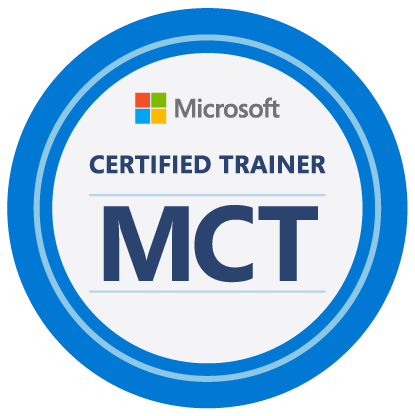The cloud revolution has transformed how businesses store and access data. But with various deployment models available, choosing the right option can be overwhelming. Let's explore the key differences between on-premise, public cloud, private cloud, and multi-cloud solutions.
- On-Premise: Imagine your own data center. You have complete control over hardware, software, and security, ideal for highly sensitive data. However, the upfront costs for infrastructure and IT staff are significant, and scalability is limited.
- Public Cloud: Think shared office space. You rent resources from providers like Amazon Web Services (AWS) or Microsoft Azure. This offers low upfront costs, high scalability, and easy management. However, customization is limited, and security requires a shared responsibility model.
Private Cloud: This is like having a dedicated floor in a high-rise. You have a cloud environment built just for your organization, either on-premise or managed by a provider. It offers a high degree of control and customization, along with better scalability than on-premise. However, there are still ongoing fees and some IT expertise is needed.
- Multi-Cloud: Imagine working from multiple co-working spaces. This approach combines resources from various public clouds and potentially private clouds. It offers increased flexibility, redundancy, and potentially lower costs by leveraging provider strengths. But managing multiple cloud environments can be complex, and vendor lock-in for specific services remains a concern.
|
Feature |
On-Premise |
Public Cloud |
Private Cloud |
Multi-Cloud |
|
Location |
On-site |
Shared infrastructure |
Dedicated infrastructure |
Multiple locations |
|
Control &
Customization |
Highest |
Limited |
High (with some shared) |
Varies |
|
Cost (Upfront) |
High |
Low |
Lower |
Varies |
|
Scalability |
Low |
High |
High (depends on setup) |
High |
|
Security |
Managed by you |
Shared responsibility |
High control |
Requires careful mgmt |
|
Pros |
Maximum control, security |
Cost-effective, scalable |
Control, customization |
Flexibility, redundancy |
|
Cons |
High cost, limited scale |
Limited control, vendor
lock-in |
More expensive than
public |
Increased complexity |
Choosing the right cloud model depends on your specific needs. Consider factors like security requirements, budget, IT expertise, and desired control and scalability. By understanding the pros and cons of each option, you can make an informed decision that empowers your business in the cloud era.
What is Microsoft Copilot for Security?
Microsoft Copilot for Security (Copilot for Security) is a generative AI-powered security solution that helps increase the efficiency and capabilities of defenders to improve security outcomes at machine speed and scale.
The official Copilot for Security GitHub Community was just released by the team! Lots and lots of guidelines, logic applications, seminars, examples, and prompting materials.
Microsoft Copilot for Security is a generative AI-powered assistant for daily operations in security and IT that empowers teams to protect at the speed and scale of AI.
🔥 The URL is lnkd.in/epnqccq8.
Microsoft has introduced a new product family called Entra. This encompasses Azure AD as well as two novel product categories: Cloud Infrastructure entitlement management (CIEM) and decentralized identity. These products aim to facilitate secure access for all by offering identity and access management, cloud infrastructure entitlement management, and identity verification services.
Additionally, we are pleased to announce new solutions and products within the Entra family.
The key benefits of these offerings can be summarized as follows:
1. Mitigation of risks associated with cloud access
2. Decentralized identity community
3. Automated critical identity governance
In this article, we will discuss the unique features of two primary serverless architectures:
BaaS (Backend as a Service) and FaaS (Function as a Service). Function as a Service (FaaS)
The Backend as a Service (BaaS) cloud computing services have varying purposes and come with a range of pros and cons.
BaaS and FaaS have unique purposes and can work together effectively in the development of serverless applications. BaaS specializes in handling the technical backend of applications, while FaaS enables the running of independent functions in the cloud.
In Serverless Architecture there are two main types of services: -
- Function as a Service (FaaS).
- Backend as a Service (BaaS).
- What is Function as a Service?
Function as a Service is a type of service in which all features of application are deploy into individual single feature and then each feature is individually hosted by the provider.By using function as a service you can build your application into single independent features.
To host the application on the internet,it needs some kind of virtual server infrastructure.Also it involves managing of operating system,web servers,etc.In function as a Service,all these things are managed by provider and not by consumer.
There are different providers like Amazon Web Service,Microsoft Azure,Google Cloud Platform, IBM who manage virtual server and software processes.
- What is Backend as a Service (BaaS)
BaaS is a previously famous cloud-based computing model, that automates and manages the backend side of a web or mobile application development.
Now, mainly known as its latest approach – Mobile Backend as a Service (MBaaS), it helps developers with data and files storage, messaging and push notifications, a social networking integration, and their configuration and supervision.
MBaaS is an exercise of employing service providers to work on the backend services for all the technical infrastructure essential for a stable application development via custom SDKs and APIs.
List of Top FaaS Providers
- AWS Lambda
- Cloud Functions | Google Cloud
- IBM OpenWhisk
- IronWorker
- Joyent Manta Functions
- Microsoft Azure functions
- PubNub BLOCKS
- Serverless Docker
List of Top BaaS Providers
- Kumulos
- Firebase
- Back4app
- Azure
- Parse
- Hasura
- Kinvey
- Firebase
- Linx
- Leancloud
References:-
· https://headmelted.com/serverless-showdown-4a771ca561d2
· https://developer.ibm.com/tv/serverless-vs-functions-service-whats-difference/
· https://dashbird.io/blog/top-function-as-a-service-faas-providers/





.jpeg)
%20(1).webp)
.jpeg)











